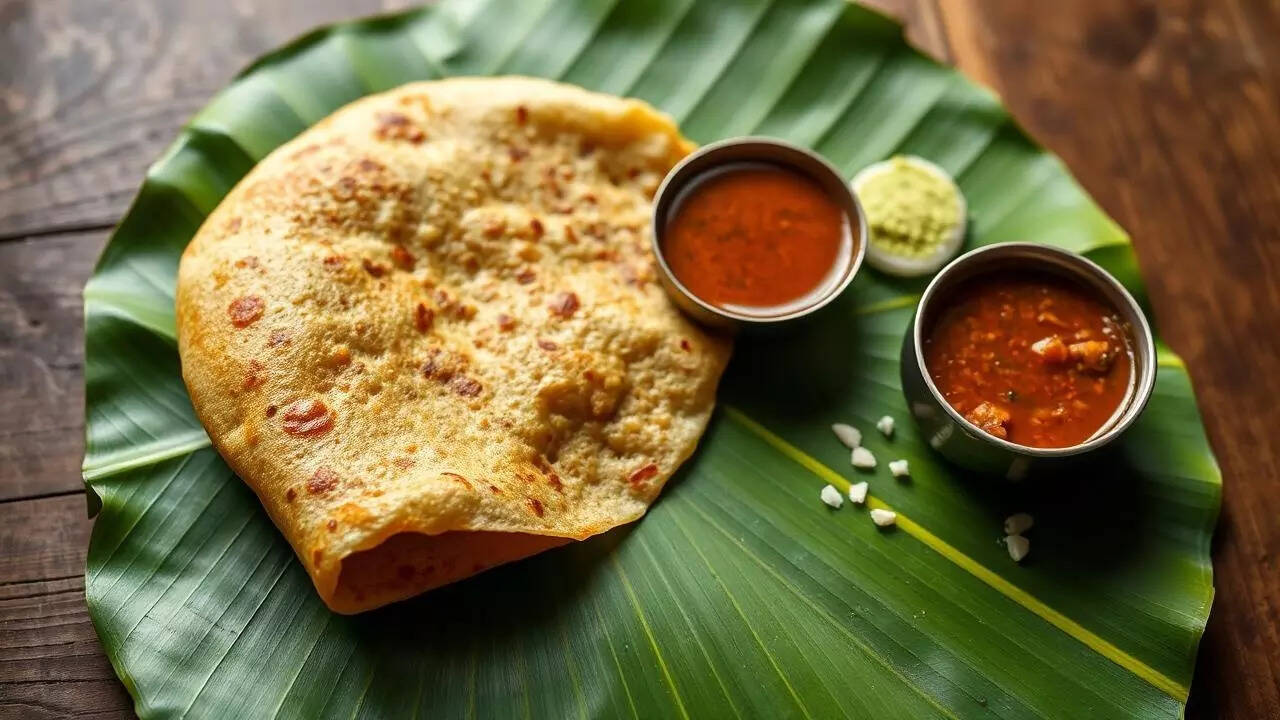How To Make Easy Vegetable Sambar At Home
Sambar is one of South India’s most loved comfort foods — a wholesome, tangy lentil stew simmered with vegetables, tamarind and aromatic spices. This quick version brings the traditional flavours of the dish to your kitchen in under 30 minutes. Perfect for breakfast with idli or dosa, or as a main course with rice, this vegetable sambar offers the perfect balance of nutrition, spice and comfort. The addition of tamarind gives it a distinctive tang, making it a satisfying meal for any time of day.
1 small drumstick (moringa), cut into pieces
½ cup diced carrots
½ cup chopped pumpkin or bottle gourd
1 small onion, sliced
1 small tomato, chopped
2 tablespoons tamarind pulp (adjust to taste)
2 teaspoons sambar powder
¼ teaspoon turmeric powder
½ teaspoon mustard seeds
1 sprig curry leaves
2 dried red chillies
1 tablespoon oil (preferably sesame or coconut oil)
Salt to taste
3 cups water (adjust consistency)
Fresh coriander leaves for garnish
Prepare the vegetables: In another pot, heat oil and add mustard seeds. Once they crackle, toss in curry leaves and red chillies. Add onions and sauté until translucent.
Add vegetables and tomatoes: Stir in carrots, drumsticks and pumpkin. Add chopped tomatoes and cook until slightly soft.
Add spices and tamarind: Mix in sambar powder, salt and tamarind pulp. Stir well so the flavours combine evenly.
Add the cooked dal: Pour the mashed lentils into the pot and mix thoroughly. Add enough water to reach a medium-thick consistency. Simmer for 8–10 minutes until the vegetables are tender and the sambar turns aromatic.
Finish and serve: Garnish with fresh coriander leaves and serve hot with rice, idli, dosa or vada.
Always add tamarind only after the vegetables are cooked — boiling it too long can make the curry bitter.
Quick vegetable sambar with tamarind is the ultimate example of how traditional Indian cooking can be both simple and deeply flavourful. With its combination of lentils, vegetables and spices, it delivers the perfect balance of nutrition and comfort in every bowl. The tamarind adds a lively tang that lifts the dish, while the one-pot method keeps it effortless. Whether you’re an experienced cook or a beginner in Indian cuisine, this easy sambar recipe ensures a hearty, authentic experience every time.

What Makes Sambar Special
Sambar is more than just a curry; it’s a reflection of South Indian culinary harmony. The blend of protein-rich lentils, fresh vegetables, tamarind pulp and a unique spice mix known as sambar powder creates a dish that’s hearty yet light. Every household has its own version, varying slightly in spice levels and ingredients, but the essence remains the same — warmth, comfort and balance. This quick version retains that traditional depth while saving time, ideal for today’s busy lifestyles.Ingredients You’ll Need
- ½ cup toor dal (pigeon pea lentils)
Step-by-Step Preparation
- Cook the lentils: Wash the toor dal thoroughly and cook it with 1½ cups water and a pinch of turmeric until soft. Mash lightly and keep aside.
Why Tamarind Is Essential
Tamarind is the heart of traditional sambar, offering its signature tang and depth. The tartness perfectly complements the earthy lentils and spicy sambar powder. Using fresh tamarind pulp instead of synthetic concentrates brings a natural sourness that elevates the dish’s flavour profile. Tamarind also aids digestion and balances the richness of the dal, giving the stew its characteristic lightness and freshness.Tips for a Perfect Quick Sambar
- Use pressure-cooked dal to save time — it softens faster and blends better with the tamarind base.
- Adjust the spice level by increasing or reducing the sambar powder.
- If you’re short on time, use ready-made tamarind paste but add sparingly — it’s stronger than homemade pulp.
- A teaspoon of jaggery can be added to balance the tang if desired.
Nutritional Benefits
Sambar is rich in protein, fibre and essential minerals. Toor dal provides plant-based protein and iron, while vegetables add antioxidants and vitamins. Tamarind is a natural source of potassium and magnesium, supporting heart and digestive health. The spices — especially turmeric and curry leaves — have anti-inflammatory and immunity-boosting properties, making sambar a balanced, wholesome meal.Serving Suggestions
Sambar pairs beautifully with steamed rice, but it’s equally popular as an accompaniment for South Indian breakfasts like idli, dosa or vada. Serve it warm with a dollop of ghee for extra richness. You can also enjoy it as a standalone soup on cooler days — its tangy-spicy warmth makes it both comforting and refreshing.Quick vegetable sambar with tamarind is the ultimate example of how traditional Indian cooking can be both simple and deeply flavourful. With its combination of lentils, vegetables and spices, it delivers the perfect balance of nutrition and comfort in every bowl. The tamarind adds a lively tang that lifts the dish, while the one-pot method keeps it effortless. Whether you’re an experienced cook or a beginner in Indian cuisine, this easy sambar recipe ensures a hearty, authentic experience every time.
Next Story